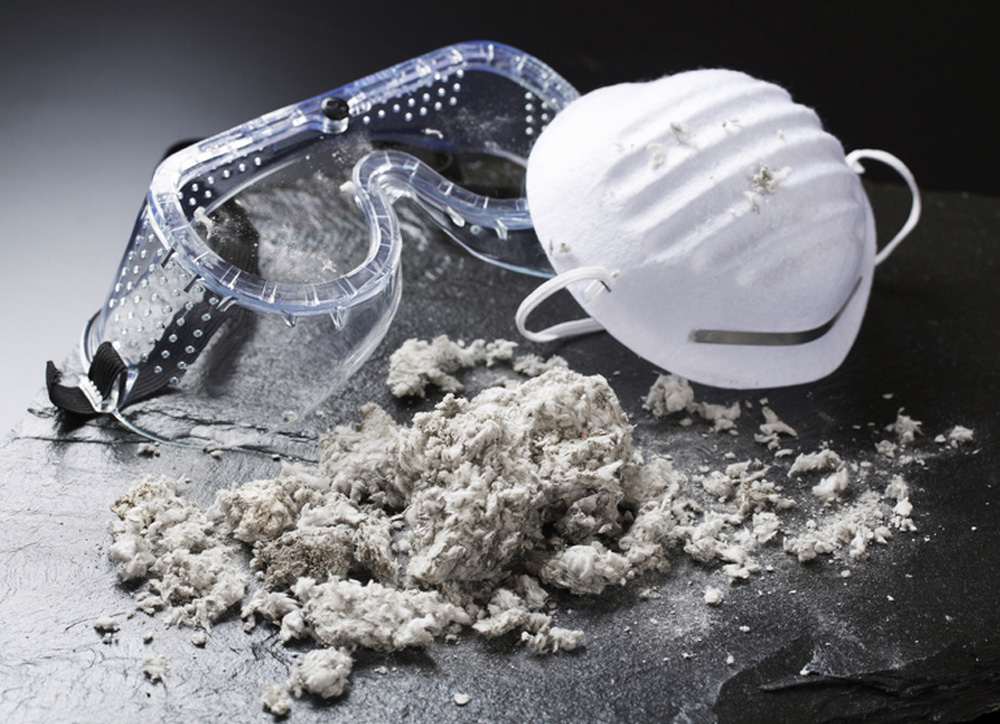These days, the hazards of asbestos are incredibly well known, and most people are aware that the substance is dangerous to our physical health. However, understanding the possibility considering if asbestos plagues your home, and is a component of your walls, floors, or appliances, can be essential to the long term health and safety of you and your family.
Asbestos is comprised of all silicate materials that are naturally occurring, and asbestos fibers have properties of extreme heat resistance, strength, and flexibility. Because of this, many industries had used asbestos in the past as a key material for products, including construction, garments, maritime, and even automobiles.
However, today we know that this material becomes incredibly dangerous if it begins to decay or is otherwise broken down and released into the air, and as a result it is currently banned in over fifty countries. In many more countries, the usage is highly restricted to places deemed safe for citizens.
Why Is It Important to Detect Asbestos?
Today there are widespread bans on the substance, and many countries who don’t have this ban simply don’t due to their developing nature and not having the resources to enforce such a ban. Even though this is true, there are almost endless products in circulation today that are old or even antique, and have materials made from asbestos before regulatory measures were passed.
Also, it is important to know where asbestos might be lurking, and it really can comprise of almost anything, from your flooring to pipe insulation to household appliances. In short, no matter what country you live in, or where you are, it is important to be able to identify where it may exist in your life, because it can be dangerous.
Where Asbestos Can Be Found
A single fiber of asbestos is somewhere between 700 and 1000 times finer than a strand of hair, which means it is impossible for the naked human eye to detect. In short, certified detection of asbestos must be conducted in a lab, but any home or property owner can begin with knowing where to look for potential areas of safety concern.
Here are some common places that may contain asbestos in a household.
- Exterior: window putty, shingles, and the roof
- Interior and Flooring: textured paint, sound proofing material, acoustic finishes, flooring
- Insulation: vermiculite, batt, and wall insulation
- Wiring and Appliances: switchboard panels, wiring insulation, fuse boxes, and appliances such as dryers, freezers, toasters, dishwashers, and more
- Heating and Boiling: wall and door gaskets, lining, covering for heated surfaces, wood or coal stoves, duct lining
- Other Places: vehicle brake linings, clutch, patching compounds, gaskets
When to Get Your Property Tested
First of all, any home that was built before the 1980’s in the United States is susceptible to having asbestos form part of their home’s construction. This was due to a series of bans on asbestos passed during the 1970’s designed to protect American citizens against the harmful substance.
Once you have determined the date of when your home was built, the following situations would require a more detailed assessment on if asbestos exists in your home.
- If there is visible wear and tear in your home, especially in the locations listed above that may contain asbestos.
- If you plan any renovation or demolition that will direct affect potential homes for asbestos, a process that will damage it and release said asbestos into the air.
- If you simply suspect asbestos has been used on your property and would like to know for a fact, for your own peace of mind.
Of course, if you are in the market to buy a new home, any home that you consider purchasing that was built before the 1980’s should also be fully tested for asbestos so you know exactly what you are getting into with your new purchase.
Take Control Over Potential Asbestos on Your Property
No matter how you look at it, understanding places where asbestos might exist, and how it could be released into the air, directly affects how safe and secure you are in your home or property. By following these guidelines, you can be assured that you will be ready to prevent dangerous situations and proactively prevent asbestos problems.


